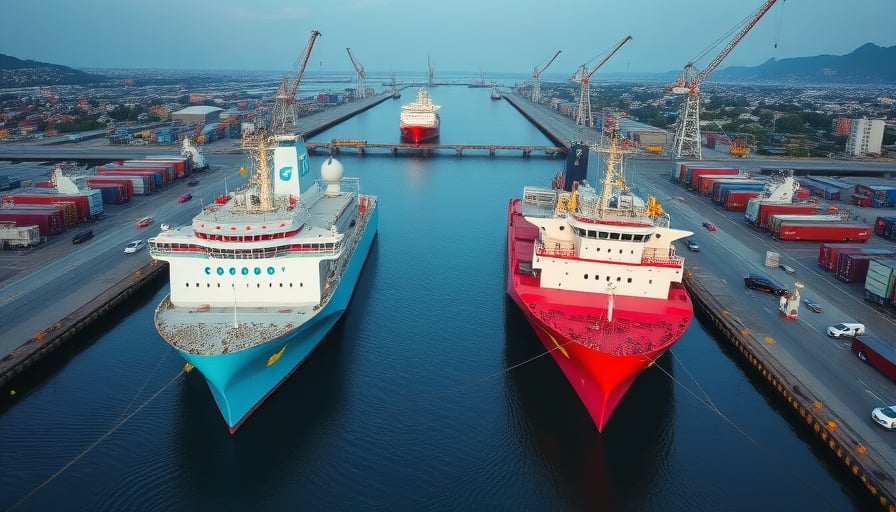China Merchants Energy Shipping Co., Ltd. (SH 601872)
China Merchants Energy Shipping Co., Ltd. (hereafter “China Merchants Energy”) is a Shanghai‑listed energy‑shipping specialist that transports crude oil, coal, iron ore and, through its subsidiary CLNG, liquefied natural gas (LNG). The company’s share price on 30 October 2025 closed at 9.26 CNY, approaching its 52‑week high of 9.45 CNY, while the 52‑week low was 5.74 CNY. With a market capitalization of 76.22 billion CNY and a price‑earnings ratio of 14.95, China Merchants Energy is a sizable player in China’s maritime freight market.
1. Market‑making activity in the shipping sector
On 30 October 2025, the Shanghai Stock Exchange’s shipping‑focused index surged over 4 %, propelled by China Merchants Energy’s 8.74 % intraday rise. The move was part of a broader rally in the maritime sector, as other heavy‑haul and container operators such as COSCO Shipping and China Shipping Logistics posted gains ranging from 5 % to 9 %. The rally coincided with a notable spike in the VLCC (Very Large Crude Carrier) freight index, which rose to 98.88 WS on 29 October, reflecting heightened demand for crude‑oil transportation amid tightening supply chains.
2. Investor sentiment and institutional support
Financial‑analysis research published by Xueqiu on 31 October clarified that China Merchants Energy and its affiliate China Merchants South Oil (601975) have no current restructuring plans. Nonetheless, the company remains attractive to institutional investors. On 30 October, a fund managed by China Tongtong Securities, the “New Juyi 6‑Month Holding Period Mixed A (012052)”, held 23,600 shares of China Merchants Energy, generating an unrealized profit of 12,300 CNY. This stake, coupled with the firm’s consistent revenue contributions from oil and LNG transport, suggests confidence in the company’s core operating model.
3. Operational highlights
China Merchants Energy’s revenue mix remains heavily weighted toward transport services (86.38 % of total revenue), with ancillary income from cargo handling, logistics support and merchandise sales contributing 6.75 % and 4.77 %, respectively. The firm’s strategic positioning in LNG shipping has been reinforced by the broader industry’s shift toward cleaner energy carriers. A recent press release from the parent conglomerate, GTT, reported a 29 % increase in revenue for the first nine months of 2025, driven by a 19‑ship LNG fleet, including methanation vessels (methaniers) and ethane carriers (ethaniers). These developments underscore the growing demand for LNG transport and hint at potential fleet expansion for China Merchants Energy.
4. Market conditions and external drivers
The upward pressure on shipping rates can be attributed to several macro‑economic factors:
- Supply chain disruptions: Persistent shortages of crude‑oil feedstocks have pushed VLCC freight rates higher.
- Trade policy: The signing of an upgraded version of the China‑ASEAN free‑trade agreement on 29 October provided a favorable backdrop for cross‑border logistics.
- Government stimulus: The State Administration of Foreign Exchange released a package of facilitation measures aimed at easing foreign trade, thereby boosting demand for overseas freight services.
These dynamics collectively created a tailwind for shipping operators, enhancing revenue streams and reinforcing investor optimism.
5. Outlook
China Merchants Energy’s current valuation—pegged at a price‑earnings ratio of 14.95—falls comfortably below the sector average, indicating potential upside if the firm continues to leverage its LNG and crude‑oil transport capacities. The company’s lack of restructuring plans, coupled with institutional backing and a supportive macro environment, positions it well to capture gains from the ongoing rebound in global oil demand and the strategic pivot toward LNG shipping.
In summary, the combination of robust freight rates, institutional interest, and a growing LNG fleet presents China Merchants Energy with a favorable operating landscape, while its share price remains poised to benefit from the broader strength in China’s maritime logistics sector.




